.
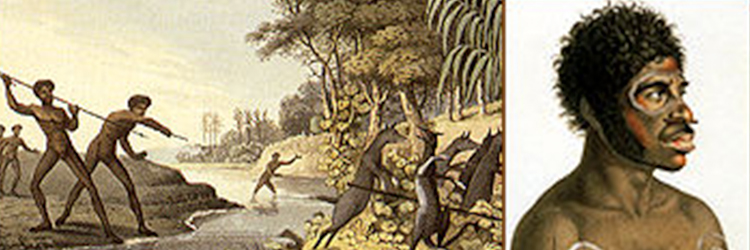 Whilst some people believe the Aboriginal people of Australia have been using the didgeridoo for 40,000 years or more, archaeological research suggests that the didgeridoo is only about 1500 years old. The evidence of this research comes in the form of rock art studies in the Northern Territory which show images of humans playing the didgeridoo painted on cave walls starting from about 1500 years ago. Before this time, there are no images of didgeridoos or humans playing didgeridoos. Regardless of how old the didgeridoo is, Western society has only recently – relatively speaking – become acquainted with the didgeridoo. The following timeline shows important dates relating to our understanding of the didgeridoo. The timeline includes historic events that either directly or indirectly led to greater awareness and understanding of the didgeridoo and the Aboriginal cultures that it is a part of. A useful feature of this timeline is the date of establishments of mission stations in the didgeridoo’s traditional heartland. Missions were important outposts through which early collecting efforts by institutions and individuals alike were conducted.
Whilst some people believe the Aboriginal people of Australia have been using the didgeridoo for 40,000 years or more, archaeological research suggests that the didgeridoo is only about 1500 years old. The evidence of this research comes in the form of rock art studies in the Northern Territory which show images of humans playing the didgeridoo painted on cave walls starting from about 1500 years ago. Before this time, there are no images of didgeridoos or humans playing didgeridoos. Regardless of how old the didgeridoo is, Western society has only recently – relatively speaking – become acquainted with the didgeridoo. The following timeline shows important dates relating to our understanding of the didgeridoo. The timeline includes historic events that either directly or indirectly led to greater awareness and understanding of the didgeridoo and the Aboriginal cultures that it is a part of. A useful feature of this timeline is the date of establishments of mission stations in the didgeridoo’s traditional heartland. Missions were important outposts through which early collecting efforts by institutions and individuals alike were conducted.
1788 Australia colonized by Europeans.
1835 First written account of the didgeridoo is published where it is described as a trumpet.
1908 Mission station established at Roper River.
1912 First audio recording of the didgeridoo. Recordings made by Sir Baldwin Spencer using a phonograph and wax cylinders.
1916 Mission station established on South Goulburn Island.

1921 Galiwin’ku Mission established by Rev. J. C. Jennison.
1925 Mission station established at Oenpelli. The word didgeridoo came into being, attributed to Herbert Basedow.

1926 Anthropologist W. Lloyd Warner commenced field research at Milingimbi, and later published “A Black Civilization: A Social Study of an Aboriginal Tribe”, the first ethnographic study of an Australian Aboriginal tribe. Mention is made of the Iraki, a “trumpet about four feet long”.
1931 Arnhem Land is estogglelished as an Aboriginal reserve.
1934 Mission established at Yirrkala by Rev. Wilbur S. Chaseling. A local arts and craft industry is created at Yirrkala to supply ethnographic museums and private collectors.
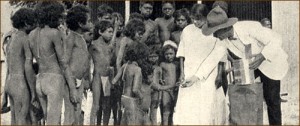
1935 Donald Thomson’s first visit to Arnhem Land. Thomson’s research in the area from the 1930s-40s remains one of the most important anthropological studies on the Yolngu people and their culture. The large number of artifacts and other items of material culture he collected are now housed at the Melbourne Museum.
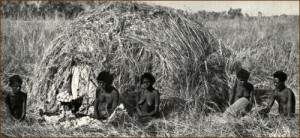
1939 Start of WWII. Royal Australian Air Force, Army and Naval bases set up over the following years in various parts of the Northern Territory including Milingimbi, Yirrkala, the Wessel Islands, North Goulburn Island, and near Oenpelli.
1946 R. M. and C. H. Berndt commenced anthropological research work in Arnhem Land, and continued field trips into the area for a number of years. A large number of art works and artifacts were collected, now housed at the Anthropology Museum of the University of Western Australia.
1948 American Australian Scientific Expedition to Arnhem Land.
1953 ‘Tribal Music of Australia’ LP, the first commercially available recording of the didgeridoo and field recorded by A. P. Elkin in Arnhem Land, released by Folkway Records.
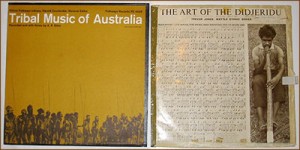
1957 Maningrida established as a ‘trading post’.
1961 Establishment of the Australian Institue of Aboriginal Studies, a statutory body devoted to Indigenous studies, later re-named the Australian Institute of Aboriginal and Torres Strait Islander Studies.
1960s Launch of self-determination policy of the Commonwealth Government. End of the missionary era. Aboriginal Councils take over the responsibility of running of communities in Arnhem Land.
1960s Alice M. Moyle and Trevor A. Jones conducted ethnomusicological research in Arnhem Land, later publishing numerous articles on Arnhem Land music and the didgeridoo.
1960s The start of historically important art collections created by Tony Tuckson, Dr Stuart Scougall, Karel Kupka, Louis Allen, Prof. Ed Ruhe, Jerome Gould, Jim Davidson and Dorothy Bennett
1963 The Art of the Didgeridoo’ by Trevor A. Jones released on LP by Wattle Recordings. This was the first demonstration of the traditional Aboriginal playing techniques of the didgeridoo by a non-Aboriginal person.
1967 Aboriginal Artists Agency established. Aboriginal music made more accessible through commercial recordings, radio and TV.
1971 Federal Government established a centralised marketing company for Aboriginal arts.
1973 Community-based art centres in Arnhem Land funded by the Aboriginal Arts Board of the Australia Council.
1976 Passing of the Aboriginal Land Rights (NT) Act 1976, which paved the way for Aboriginal people in the Northern Territory to win back their land.
1977 ‘Bamyili Corroboree, Songs of Djoli Laiwanga’ cassette released by Greville Records featuring David Bl*n*s* on didgeridoo. Bl*n*s* was regarded as the best player of the didgeridoo in the Western Arnhem Land style.
1977 ‘Wandjuk Marika in Port Moresby’ EP released by Larrakin Records, the first studio recording of an Aboriginal didgeridoo player.
1986 Formation of the Yothu Yindi band from north-east Arnhem Land, Northern Territory.
1990s The World Wide Web (WWW) is born.
1990s A number of cassettes released on playing the didgeridoo including Alastair Black’s “Didgeridoo – How to Play”.
1991 ‘Bloodwood, the Art of the Didjeridu’ by Alan Dargin with Michael Atherton released by Natural Symphonies. ‘Bloodwood’ received critical acclaim worldwide, and Alan’s virtuosity with the instrument set the standard for many didgeridoo players and recording artists for the next decade.
1993 Mandawuy Yunupingu, singer songwriter for the Yothu Yindi band, named Australian of the Year.
1993 Passing of the Native Title Act 1993, following the Mabo judgement handed down by the High Court of Australia that put the legal fiction of terra nulliusto rest.
1996 ‘Didjeridu Techniques of an Aboriginal Tribe’: first website on the yidaki and the traditional playing techniques of the Yolngu people.
1999 Inaugural Garma Festival in Gove, Northern Territory.
2000 Sydney Olympic Games. The start of mass produced didgeridoos.
2001 Establishment and launch of Rripangu Yirdaki, Djalu Gurruwiwi’s family enterprise.
2001 1st issue of Didgeridoo & Co Magazine.
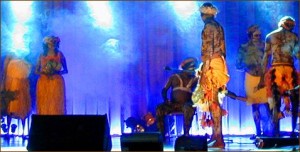 2002 Djalu’ Gurruwiwi visits Germany for the Rripangu Yirdaki Festival.
2002 Djalu’ Gurruwiwi visits Germany for the Rripangu Yirdaki Festival.
2002 Establishment of Manikay.com for the “promotion and enjoyment of traditional Arnhem Land music”.
2003 The Australian Competition & Consumer Commission (ACCC) takes action against Australian Icon Products Pty Ltd, a large manufacturer of Aboriginal-style souvenirs, for alleged breaches in the Trade Practices Act including misleading and deceptive conduct.
2003 iDIDJ Australia is established.
